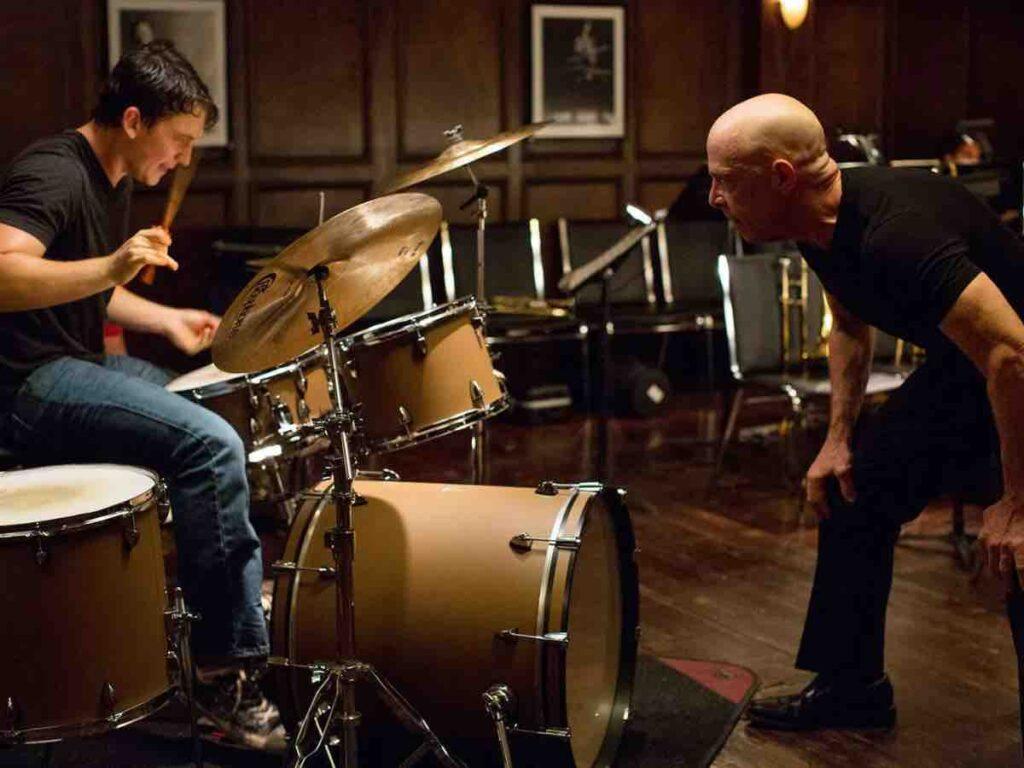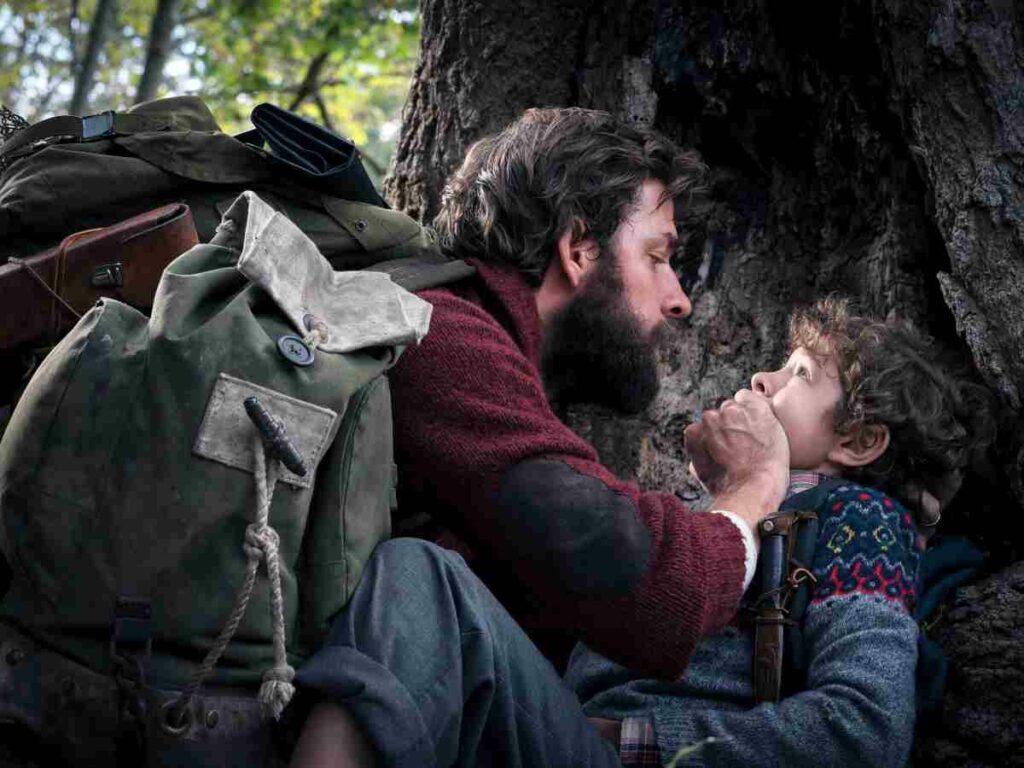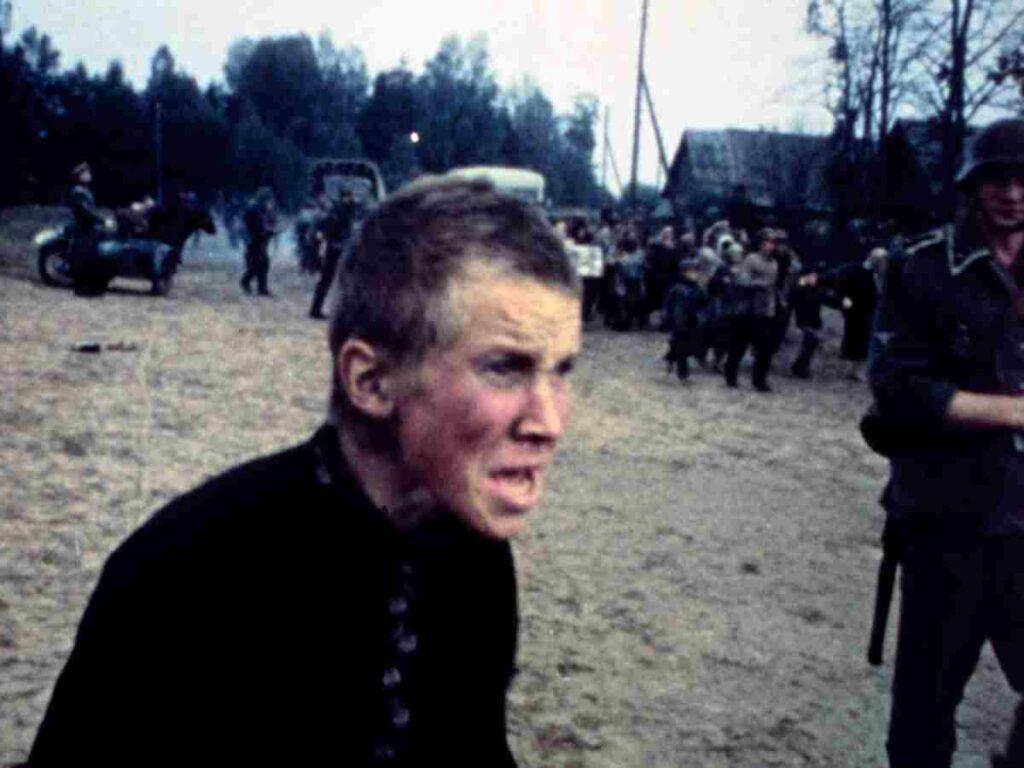From The Silence of the Lambs (1991) to Persona (1966), here are the best screenplays every screenwriter should read.
If you’re an aspiring screenwriter, the best way to hone your craft is by studying screenplays of some of the greatest writers in cinema. We’ve put together an essential list of screenplays every aspiring screenwriter must revisit. With so many accomplished screenwriters, this isn’t an exhaustive list but one that will help you understand what makes a great screenplay and help you reproduce the principles used here.
1. Casablanca (1942)

Casablanca redefined cinema in the 1940s with surprising character depth and witty dialogues. But, shockingly the crew went into production without a finished script. A lot of the plot was made up on set, but this process works because the writers have thought out their characters and have a reasonable idea of what they’re going to do.
When it comes to screenwriting, conflict is the name of the game. The writers of Casablanca were well aware of this and used this to create moments that leave us completely enthralled. It’s also a clear indicator of how sarcasm can be used effectively on screen, making the dialogue fun and seem spontaneous.
Casablanca also proves how important it is for screenwriters to define the setting as a character. The ancient port city in Western Morocco, Casablanca is always teeming with life and filled to the brim with interesting characters. Crooks, slave traders, sex workers, pickpockets, gamblers, freedom fighters, and the list goes on. We nearly spend seven full minutes watching the city come alive before getting to the protagonist or antagonist. This should tell you how important the setting is. It’s easy to get lost in the talk of conflict and resolution, but never underestimate the power of a setting.
2. Breathless (1960)

Godard’s debut feature reinvented the movies in dramatic fashion and it’s never looked the same ever since. Godard was one of the leaders of the French New Wave movement, and along with Francois Truffaut, Claude Chabrol, and Agnes Varda rebelled against the set norm. They created films on shoestring budgets on locations, experimenting with new narrative structures, and celebrating the vitality of youth.
Godard often said some of his best films had no script at all.
Cinematographer Raoul Coutard recalls his time working on the sets of Breathless:
Godard was determined this was going to be the cheapest film ever made, shooting in the street, with no sound, no lights, no crew. He told me it would be like shooting a reportage… We had no script. There was the original press article on which (Francois) Truffaut had based his story outline, but every day Jean-Luc would just turn up with his little exercise book and scribble some notes and some dialogue and we would rehearse maybe a couple of times.
3. Persona (1966)

One of the greatest screenwriters of all time, Ingmar Bergman’s films tend to be a deep, investigative focus on the human condition. Persona is no different. The script was born out of a need to stay occupied when he was recovering from an acute case of pneumonia. The story centers on duality as two personalities fuse into one.
One moment that perfectly encapsulates this wildly original idea is when Bergman juxtaposes the faces of each woman onto the screen, merging Liv Ullmann and Bibi Andersson’s characters into a single entity. The film strikingly focuses on the human face, as entire conversations of emotions are played out through the eyes and a hint of a smile on the lips.
What I like the most is that Bergman lets his viewers draw their own conclusions regarding the film. Some view it as a metaphor for the subconscious while others see it as an investigation of schizophrenia.
But, the one thing that both sides seem to agree upon is that Persona is one of the greatest films ever made. It was, in fact, ranked number 6 non-English speaking film in the critics’ poll conducted by the BBC in 2018.
4. The Godfather (1972)

Coppola’s The Godfather is a masterclass in fitting the sprawling universe of a novel within the confines of a feature film. The script manages to merge heightened drama with the world-building required to narrate the tale of an Italian mafia family to Western audiences. Despite all the action surrounding the mafia, the focus is still on the story of a decent man who’s corrupted by the circumstances he gets stuck in. Coppola and Puzo deftly use the dense plot from the book and transform them into details. These details get scattered across the film, elevating pivotal scenes to dizzying heights.
With The Godfather, Francis Ford Coppola and Mario Puzo show us how powerful a tool juxtaposition can be in a screenplay. Take the iconic scene of Michael’s son being baptized, for instance. The writers juxtapose this visual against the brutal murders being carried out on Michael’s orders. Michael’s saying that he renounces all works of Satan, but these actions of his are in direct contrast to the actions taking place in another set of scenes. This combination makes it more emotionally resonant with the audiences than they would have individually.
So, the next time you revisit your script, think of how you can use this element to elevate your story for maximum impact.
5. Die Hard (1988)

Heralded to be the gold standard in modern action films, Die Hard, in a stroke of genius, subverted the entire genre. The world of Hollywood was leaning towards the episodic format of Bond films or featured heavyweights like Stallone or Schwarzenegger.
Die Hard instead put in a common man amidst the heat of action. It also expanded upon the importance of having a layered antagonist whose actions and motivations squared off against the protagonist. Steven de Souza, reportedly, wrote the script as if Gruber were the hero. It’s sometimes rewarding to look at your project from the eyes of the villain.
Another thing that Die Hard’s screenplay does well is the subtle insertion of exposition. Take the scene of Bruce Willis (John McClane) in the limousine when a noisy driver urges him to volunteer information about the broken state of his marriage. What seems like a routine exchange, actually reveals Bruce’ state of mind at the time and explains his character’s motivations without sounding like information that was dumped at the viewer. In fact, the limo driver is revealing (with his guesses) almost as much about McClane’s marriage as McClane is. (Read the script here)
6. The Silence of the Lambs (1991)

This is one of the finest examples of adapting a novel into a feature film. Writer Ted Tally does an excellent job condensing all that happens in a lengthy book into a crisp, two-hour film. Where the script really excels, in my opinion, is in its focus on the characters and their intrinsic motivations. Tally gives us a chance to delve deeper into the minds of FBI agent Clarice and the frightful Hannibal Lecter.
What the script does really well is showcasing its lead as an at-odds hero. Jodie Foster, who is five feet tall is made to stand among taller people who’re constantly looking down on her. This visual cue intentionally makes her seem less capable to viewers, amplifying the impact when she overcomes great adversities in the end.
The plot’s filled with active characters who’re all working towards something. There isn’t a single scene out of place and hence there isn’t anything tedious about them. A scene either advances the plot or reveals the motive of a certain character. Multiple drafts and rewrites are required to get to such a taut screenplay. So, one essential tip would be to keep refining your script because there’s no such thing as a flawless screenplay.
7. Pulp Fiction (1994)

Quentin Tarantino wanted to show the rest of the world the Los Angeles that he saw – the grime underbelly, the dirty dealings of the underworld. So, while being stuck in Amsterdam on a press tour, he and Roger Avary locked themselves up in a hotel room and churned out the script for Pulp Fiction. It’s a landmark film for a multitude of reasons, one of them being that it introduced a non-linear form of storytelling to mainstream audiences. The rapid-fire dialogue, unconventional story-lines won over critics and landed Tarantino an Oscar for Best Screenplay.
One of the reasons Pulp Fiction stands out is because it offers the vicarious thrill of a journey into what seems like a routine, familiar setting that is inhabited with these strange characters and obscure sub cultures, almost as if we were voyeuristically witnessing the underbelly of our own world.
The Fast and The Furious franchise did this with illegal racing, while Point Break (1991) did it with surfing. So, as a writer, it might be worth seeking out fresh sub-cultures in lieu of giving viewers an experience of a lifetime. Research it well and try to avoid alternate realities that have already been explored.
8. Forrest Gump (1994)
This movie is somewhat of a mystery. It shouldn’t have worked at all. There was no sense of urgency, no goal, no obstacles. Still, Forrest Gump was one of the most successful movies of all time and even went on to win six Oscars.Forrest Gump’s writer, Roth is an interesting figure. He hasn’t formally studied screenwriting and mostly writes based on his intuition and experience.
Forrest Gump makes us realize the power of the underdog narrative. We root for him because he isn’t necessarily the brightest of the lot, has leg braces on, and is chasing someone clearly out of his league. It’s almost impossible to not root for his cause.
Another interesting thing that Roth does is take some really bold risks in his screenplay. Gump’s best friend dies on the battlefield, the love of his life is dying of AIDS, his grandfather started the Ku Klux Clan. These decisions aren’t something you would associate with a typical feel-good movie, but like everything else in this movie, it miraculously works.
There’s also a striking visual element that symbolizes the journey of our lead character. The movie opens with a delicate feather gliding along with the breeze. This feather symbolizes Forrest’s unpredictable journey. Just like the feather, his life is seemingly directionless and influenced by the environment surrounding him, a little but important detail of Gump’s character.
9. The Usual Suspects (1995)
Newbie Christopher McQuarrie and director Bryan Singer came together to give us this neo-noir mystery film back in 1995. The script defied every notion of a whodunnit and was filled with a complex plot, time-jumping, and voice-overs. It was this unique proposition that landed them an Oscar a year later.
One of the major strengths of the script is that it weaves an intriguing central mystery. Audiences might get lost sometimes, but they’re still invested in finding out who Keyzer Soze is. Also, with information literally a click away, it’s more important now to stay a step ahead of your viewers. McQuarrie had spent a couple of years in the station working, so it was naturally easy for him to write about a cop procedural. So, do your research beforehand or pick a theme that you’re familiar with.
When Singer first pitched the script, all major studios were of the opinion that it was an interesting script, but could never be a financially viable project. But, Singer persisted and finally was able to bring European investors on board. So, consider all funding options before throwing in the towel. Crowdfunding might also be a good option. Think Zach Braff’s Wish I was Here or Spike Lee’s Da Sweet Blood of Jesus.
10. Memento (2000)

The Nolan brothers tried to narrate an audacious tale of two different storylines in Memento. The script deviated heavily from the three-act structure and was unlike anything we’d ever seen before. But, despite bending the rules, Nolan still gives us a relatable lead in Leonard Shelby. He could be any one of us who just happens to be a subject of misfortune. As viewers, we’re getting information at the same time that Leonard is getting. This makes the process all the more engrossing as we ponder about the events that might transpire.
Let’s talk about the three-act structure for a second. It might be conventional, but the type of structure hardly matters as long as you’re telling a great story. Memento is structured like a paperclip, with color and black and white scenes cutting back and forth. This type of ingenious structure allows you to end each scene with a cliffhanger.
Memento moves back and forth in time differentiated by black and white for the past, and color in the present.
11. Eternal Sunshine of the Spotless Mind (2004)

Charlie Kaufman has made a name for himself with his innovative screenplays. Eternal Sunshine of the Spotless Mind is a perfect example of this. Kaufman marries the high-concept idea of memory erasure with a deeply emotional story of two people falling in and out of love. For a script that deals with the complex premise of a man’s struggle with his girlfriend’s erasure of their relationship, the plot is never hard to follow.
It’s easy to relate to Joel throughout his journey. We’ve all experienced a bad breakup, reminiscing one painful memory after another. Charlie Kaufman understands this and grounds the almost sci-fi-sounding plot in human emotions and experience.
One of the best scripts in recent times, Eternal Sunshine of the Spotless Mind is surreal, dramatic, funny, and philosophical. Think of the whole sequence where they hear each other’s tapes and discover their darkest thoughts. Joel is on the verge of letting go. It’s simply heartbreaking to watch. The Academy saw merit too and gave him his second Oscar for Best Original Screenplay.
Not to forget, the film’s inventive mise-en-scène lends emotional heft and resonance to the story.
12. The Dark Knight (2008)
The gritty retelling of the story of Batman is one of the most celebrated films in the genre. The Nolan brothers took a couple of conscious decisions to stand out from the rest. The first was the design of the hero as a flawed and, more importantly, mortal being. The problem I face with a lot of superhero movies of late is that they are all-encompassing and are never really under any real danger. But, the protagonist is different here. We see him terrified by bats and get hurt by an actual bullet. Because he isn’t born with superhuman abilities like his Justice League counterparts, he can’t simply fly away from trouble. So, there’s always a concern about whether he’s going to be able to survive. Nolan puts the reluctant hero trope to good use.
Another decision that worked brilliantly is the design of the antagonist. The Joker is unhinged, chaotic and unpredictable. You never really know what he could do next which makes watching him all the more exciting. He’s aware of Batman’s weaknesses and exploits them to reveal his inherent hypocrisy. The script decides to hand the win to the antagonist and it’s this creative stand that makes The Dark Knight a masterpiece.
Read Dark Knight Trilogy: The Complete Screenplays
13. Whiplash (2014)

Damien Chazelle’s upward trajectory is nothing short of a fairytale. The pinnacle of this journey came when Whiplash won three Oscars and narrowly missed out on Best Adapted Screenplay. The script is filled with rich visual imagery. But, the biggest learning for any aspiring screenwriter or filmmaker is the elements that madeWhiplash a story a viable project for producers to get involved in. The action was mostly contained, taking place in a few rooms. It’s a world that the writer knew of and didn’t require him to spend a lot of time researching.
Whiplash narrates the tale of an artist’s obsession with greatness and the sacrifices and struggles they must endure to get there. Damien’s narrative structure takes us right into the head of the character. We’re put in their shoes making us acutely aware of the motivations that drive them towards their goal. For Andrew, it’s his father who’s described to be a moderately successful high school teacher and an unsuccessful writer. He despises the mediocrity of his father’s life and strives to be better. It’s this skilful writing that keeps us invested in Andrew’s journey.
Conclusion
There you have it! These are some of the best scripts, films and filmmakers to learn from before you set out to make your own film. If you’re a struggling filmmaker with no money, no resources, no connections, take a page from Jean Luc Godard’s book and start creating. You can make a film regardless of what you have at your disposal. All you need to make a film are a good idea and a camera. Period.
We know there are a couple of obvious ones missing from the list, like Citizen Kane and Chinatown, to name a few. These movies get so often discussed that we felt that there were other interesting and worthy ones to talk about. Remember, scriptwriting is an acquired art that requires years of immense dedication to perfect.
And the best way to get started is to write your own using principles from the best screenplays you can lay your hands on.




